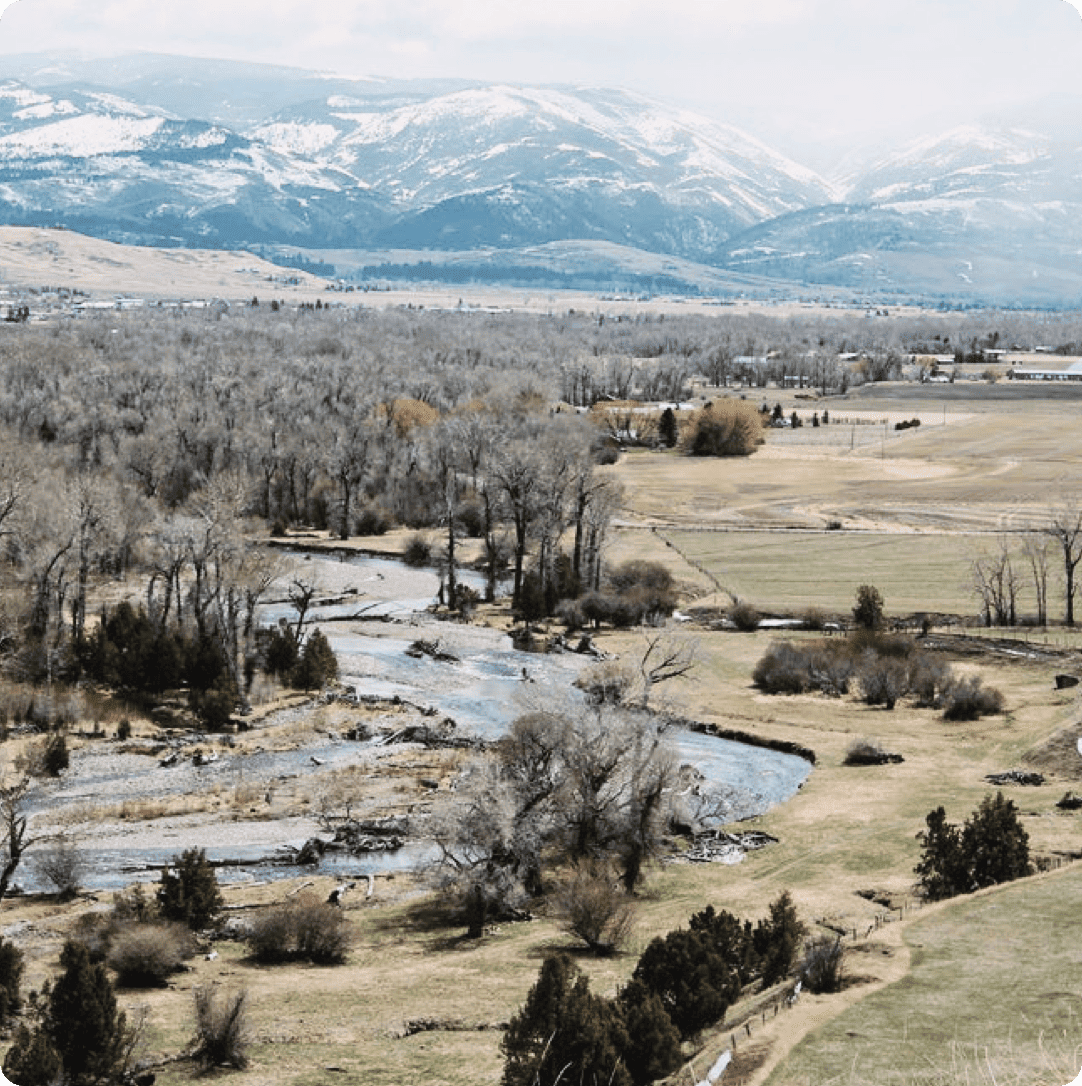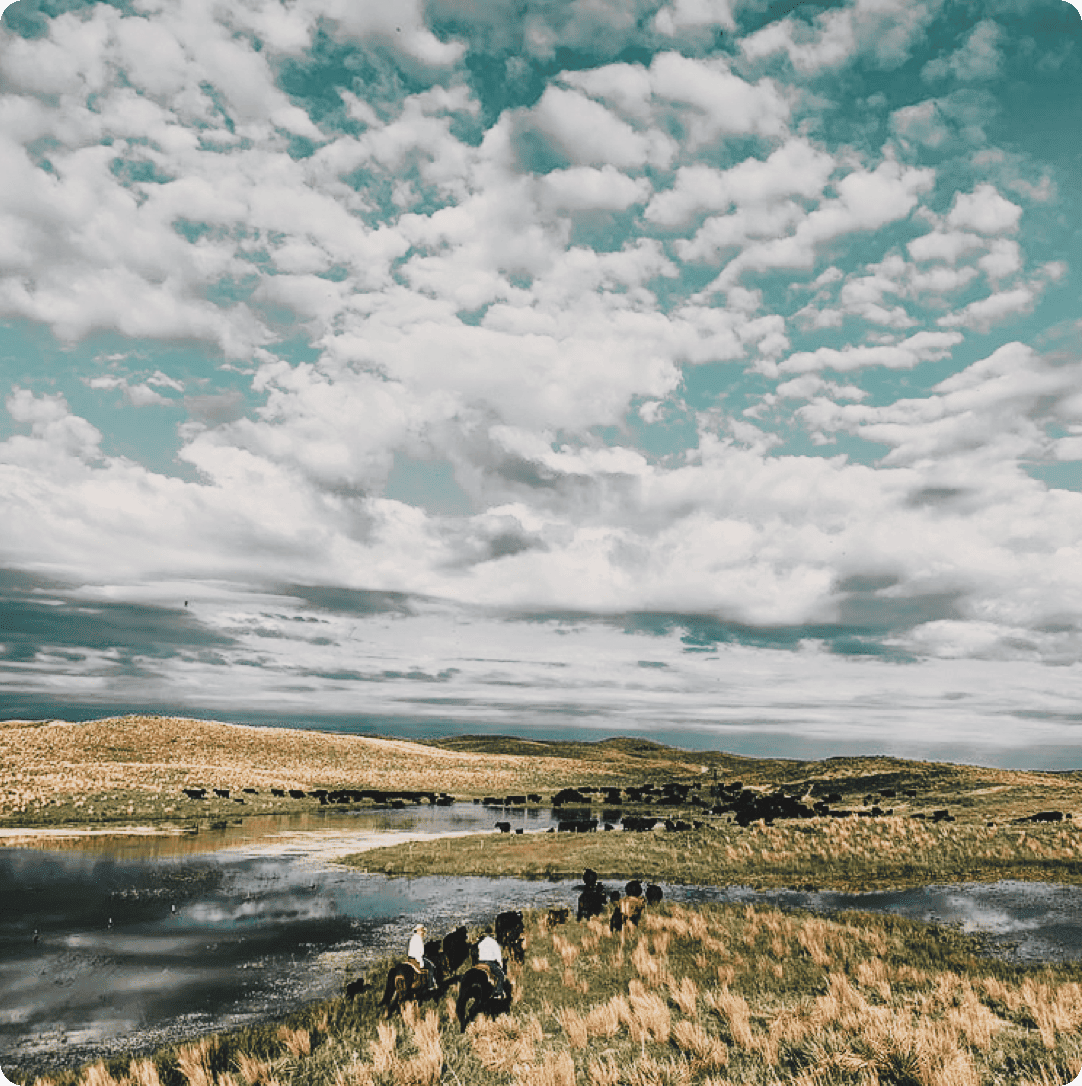Book your next North Dakota Turkey hunt with LandTrust, the best way to hunt private land.
Find your next North Dakota Turkey hunt by Unit.
Unit 27
Unit 27, located in western North Dakota, features a rugged and diverse landscape of rolling hills, grasslands, and dramatic badlands, with the Little Missouri River and its tributaries providing important riparian corridors. The county’s topography is characterized by steep canyons, bluffs, and open prairies, with the western portion becoming more rugged and mountainous, creating sheltered areas that are ideal for wild turkeys. The Little Missouri River Valley, with its mix of wooded draws and grassy areas, offers the perfect habitat for nesting, roosting, and foraging, as turkeys thrive in environments that provide both cover and access to food. The diverse terrain of McKenzie County supports a small but growing population of wild turkeys, particularly along the river corridors and in areas with trees and shrubs. The county’s combination of open grasslands, riparian habitats, and rugged terrain creates a mosaic of favorable conditions for wild turkeys to flourish. Overall, the varied landscape of McKenzie County provides suitable conditions for wild turkey populations, with increasing numbers found in areas where shelter, food, and water are abundant.
Unit 37
Unit 37 spans seven counties in southeastern North Dakota and is characterized by a mix of gently rolling hills, flat prairies, and fertile river valleys, offering diverse habitats for wildlife, including wild turkeys. These counties are largely dominated by the expansive Red River Valley and its tributaries, with the James River running through several of them, creating riparian corridors of trees and shrubs that provide essential cover for nesting and roosting. The open grasslands and croplands found throughout the region offer abundant food sources, including seeds, berries, and insects, which are crucial for wild turkey populations. While much of the land is agricultural, the presence of wooded draws, creek beds, and small wetlands in these counties provides ideal shelter and protection for turkeys. The combination of river valleys, grasslands, and scattered woodlands supports a growing population of wild turkeys, especially in areas where these habitats intersect. Overall, the diverse terrain in these counties offers a balanced environment for wild turkey habitat, with ample foraging opportunities and sufficient cover for nesting and roosting.
Unit 45
Unit 45 covers Stark County in western North Dakota and features a mix of rolling hills, expansive grasslands, and rugged badlands, with the terrain primarily dominated by semi-arid prairie. The county is intersected by the Heart River, which creates riparian corridors with trees and shrubs, offering key habitat for wild turkeys, particularly for nesting and roosting. While much of the county is open prairie, the river valleys and sheltered draws provide the necessary cover and food sources for turkeys, such as seeds, berries, and insects. The varied topography, with its combination of open grasslands, wooded areas, and creek beds, supports a growing turkey population in the region, particularly along the river corridors. Wild turkeys in Stark County favor areas with a mix of open foraging space and wooded cover, which are provided by the diverse terrain. Although the turkey population is still relatively small, the combination of grasslands and riparian zones makes Stark County an ideal environment for their expansion.
Unit 50
Unit 50 covers six counties in northeastern North Dakota feature a mix of flat to gently rolling terrain, with expansive prairies, wetlands, and river valleys that provide varied habitats for wild turkeys. The Red River and its tributaries, including the Pembina and Goose rivers, create fertile riparian corridors with trees and shrubs that offer critical nesting, roosting, and foraging sites for turkeys. These counties' abundant wetlands, grasslands, and wooded draws provide diverse food sources, such as seeds, berries, and insects, which support turkey populations. While much of the land is open prairie and farmland, areas near river valleys and wooded patches offer necessary cover for turkeys, who prefer a combination of open foraging space and protected roosting sites. The overall turkey population in these counties is still relatively small but growing, particularly in areas where the natural features provide suitable habitat. The combination of river valleys, wetlands, and forested areas in these counties makes them an ideal environment for wild turkeys to establish and expand their population.
Unit 51
Unit 51 is in the northwest portion of the state and runs to the border with Canada. Burke County, most of Renville County (excluding the portion east of U.S. Highway 83), the western part of Bottineau County, and the western part of Ward County feature a diverse landscape of rolling hills, grasslands, and wooded river valleys, providing varied habitats for wild turkeys. These areas are dominated by semi-arid prairie, with the Missouri River and its tributaries creating fertile riparian corridors with trees and shrubs that serve as key areas for nesting, roosting, and foraging. The terrain also includes hilly uplands, creeks, and wooded draws that offer shelter and cover for turkeys, as well as open grasslands for food sources like seeds and insects. The combination of prairie and riparian zones in these counties provides a balance of open foraging space and protected roosting sites, which are essential for wild turkeys. While turkey populations in these areas are still relatively small, the varied topography, particularly along the river corridors and forested draws, supports a growing turkey presence. Overall, the diverse terrain in these regions provides the necessary resources—shelter, food, and cover—for wild turkey populations to thrive and expand.
Season Info - 2025
Discover More
- North Dakota Whitetail Hunting Units
- North Dakota Partridge Hunting Units
- North Dakota Antelope Hunting Units
- North Dakota Elk Hunting Units
- North Dakota Duck Hunting Units
- North Dakota Pheasant Hunting Units
- North Dakota Waterfowl Hunting Units
- North Dakota Mule Deer Hunting Units
- North Dakota Grouse Hunting Units
- North Dakota Moose Hunting Units

